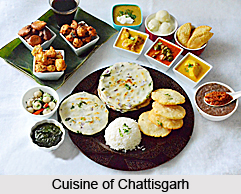This plant is another variety of celery. Celeriac fruit or seed is somewhat smaller in size than celery, has dark green foliage with less developed stalks and swollen roots, 5 to 6.5 cm in diameter. This is also called turnip-rooted celery.
The seeds are used as alternate to celery, but as such do not fetch the value as high as celery. But it can be used for manufacture of various value added products as cheaper alternate to celery to reduce the price without compromising with basic quality.
 The leaves of celeriac contain:
The leaves of celeriac contain:
Moisture: 81.3 %
Carbohydrates: 8.6 %
Fat: 0.6 %
Protein:6.0 %
Calcium:0.23 %
Phosphorus:0.04 %
Iron:6.3 mg/100g
Vitamin A: 5800 to 7500 I.U
Vitamin C (ascorbic acid):62 mg/100g
The stalks of the plant contain:
Moisture:93.5 %
Carbohydrates:3.5 %
Fat: 0.1 %
Protein:0.8 %
Calcium: 0.03 %
Phosphorus:0.04 %
Iron:4.8 mg/100g
Vitamin C: 6 mg/100g.
Traces of copper and arsenic are reported in the tuberous root, whose food value appears to be very low. The herb is also reported to contain the glucoside apiin.
The leaves and stalks are used as salad and for flavoring soups. The tuberous root is eaten after cooking.
The seeds are cheaper alternative of celery seeds. It also yields essential oil, which can be utilized for identical purposes as in case of celery seed oil. Therefore in spite of the fact that it may not fetch same value as celery products, the products from this plant also has market demand. Celeriac is grown in France. In India it is grown up to limited extent in Uttar Pradesh and Punjab.
Botanical Name: Apium graveolens var rapaccum de Candole.
Family:Umbelliferae
Indian Name: Cellery




















